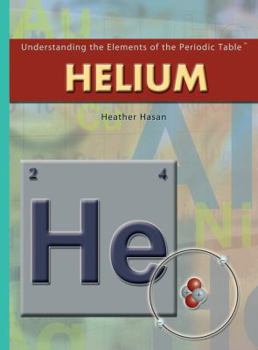Helium
This book explores the second most abundant element in the universe. The reader's interest is captured through photographs, anecdotes, interesting facts, helium's discovery, and the practical role it plays in our lives like bright balloons.
Format:Library Binding
Language:English
ISBN:1404207031
ISBN13:9781404207035
Release Date:July 2006
Publisher:Rosen Central
Length:48 Pages
Weight:0.80 lbs.
Dimensions:0.3" x 8.0" x 10.5"
Age Range:10 to 13 years
Grade Range:Grades 5 to 8
Customer Reviews
1 rating
Introduction to the element first discovered on the Sun
Published by Thriftbooks.com User , 14 years ago
I've read several books in the "Understanding the Elements of the Periodic Table" series for young adults (YA), and although they follow the same format, much depends on the familiarity of the author with his or her subject. `Helium's author, Heather Elizabeth Hasan has a vigorous and interesting style, but could have presented some of her facts a bit more carefully. For instance, contrary to the author's contention, Helium is indeed bound by gravity (as are all objects with mass--light, too, according to Einstein). Atoms of Helium are able to evaporate from Earth's atmosphere, but have more difficulty escaping from massive objects such as the Sun. It is also not quite true that "Helium is the only element to be identified in space before being found on Earth!" Technetium (element 43) was discovered in the spectra of S-type red giant stars in 1952, before it was isolated in Congolese pitchblende ten years later. "Helium" contains short but interesting discussions on noble gases and valence electrons, the hydrogen bomb, and superfluids. It is profusely illustrated in color, with photographs of the many uses of this element by a welder, scuba diver, balloon, and the air-tight case protecting the U.S. Constitution. This would have been a good book to insert a few pages on the actual creation of the elements, since hydrogen and helium were born in inconceivable fury at the very birth of our Universe. For readers who would like to gain an understanding of how the elements were actually created, I can highly recommend Marcus Chown's The Magic Furnace: The Search for the Origins of Atoms. For those readers who would like to further explore the mysteries of the periodic table, Nature's Building Blocks: An A-Z Guide to the Elements (2003) by John Emsley and The Periodic Table: Its Story and Its Significance (2007) by Eric R. Scerri are two very good treatments. For more general reading on the periodic table and how it sparked the interest of young scientists, two outstanding autobiographies are available: Uncle Tungsten: Memories of a Chemical Boyhood (2001) by Oliver Sacks and The Periodic Table (1975) by Primo Levi.






